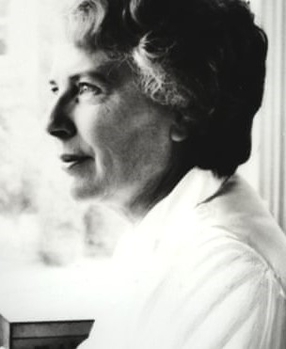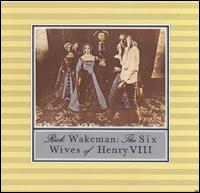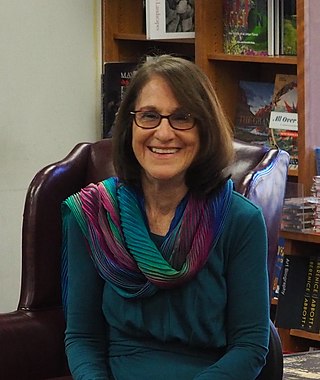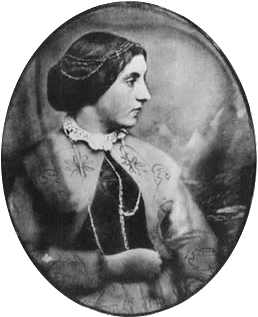
Mary, Lady Stewart was a British novelist who developed the romantic mystery genre, featuring smart, adventurous heroines who could hold their own in dangerous situations. She also wrote children's books and poetry, but may be best known for her Merlin series, which straddles the boundary between the historical novel and fantasy.
Kilbarchan is a village and civil parish in central Renfrewshire, in the west central Lowlands of Scotland. The village's name means "cell (chapel) of St. Barchan". It is known for its former weaving industry.

Dame Mary Jean Gilmore was an Australian writer and journalist known for her prolific contributions to Australian literature and the broader national discourse. She wrote both prose and poetry.

Anna "Nan" Shepherd was a Scottish Modernist writer and poet, best known for her seminal mountain memoir, The Living Mountain, based on experiences of hill walking in the Cairngorms. This is noted as an influence by nature writers who include Robert Macfarlane and Richard Mabey. She also wrote poetry and three novels set in small fictional communities in Northern Scotland. The landscape and weather of this area played a major role in her novels and provided a focus for her poetry. Shepherd served as a lecturer in English at the Aberdeen College of Education for most of her working life.

The Six Wives of Henry VIII is the first studio album by English keyboardist Rick Wakeman, released in January 1973 on A&M Records. It is an instrumental progressive rock album with its concept based on his interpretations of the musical characteristics of the wives of Henry VIII. After signing with A&M as a solo artist, Wakeman decided on the album's concept during a tour of the United States with the progressive rock band Yes. As he read a book about the subject on his travels, melodies he had written the previous year came to him and were noted down. The album was recorded throughout 1972 with musicians from Yes and The Strawbs, the group Wakeman was in prior to Yes, playing on the album.

The Macdonald sisters were four English women of part-Scottish descent born during the 19th century, notable for their marriages to well-known men. Alice, Georgiana, Agnes and Louisa were the daughters of Reverend George Browne Macdonald (1805–1868), a Wesleyan Methodist minister, and Hannah Jones (1809–1875).

Margaret George is an American historical novelist specializing in epic fictional biographies. She is known for her meticulous research and the large scale of her books. She is the author of the bestselling novels The Autobiography of Henry VIII (1986), Mary Queen of Scotland and the Isles (1992), The Memoirs of Cleopatra (1997), Mary, Called Magdalene (2002), Helen of Troy (2006), Elizabeth I (2011), The Confessions of Young Nero (2017), and The Splendor Before the Dark (2018).

The Canongate is a street and associated district in central Edinburgh, the capital city of Scotland. The street forms the main eastern length of the Royal Mile while the district is the main eastern section of Edinburgh's Old Town.
Ian Macpherson (1905–1944) was a Scottish writer from Leslie Place, Forres, Moray, Scotland. He graduated from Aberdeen University in 1928 with a first-class honours degree in English. His first novel, Shepherds Calendar, was published in 1931.The book depicts a young man's growth to maturity in a farming community dominated by hard toil and the influence of the seasons.
Agnes Sligh Turnbull was a bestselling American writer, most noted for her works of historical fiction based in her native Western Pennsylvania.
Agnes Mure Mackenzie CBE was a Scottish historian and writer. Her middle name is frequently misspelled Muir.

Jane Wells Webb Loudon was an English author and early pioneer of science fiction. She wrote before the term was coined, and was discussed for a century as a writer of Gothic fiction, fantasy or horror. She also created the first popular gardening manuals, as opposed to specialist horticultural works, reframing the art of gardening as fit for young women. She was married to the well-known horticulturalist John Claudius Loudon, and they wrote some books together, as well as her own very successful series.

Jean Hepburn, Lady Darnley, Mistress of Caithness, Lady Morham was a Scottish noblewoman and a member of the Border clan of Hepburn. Her brother was James Hepburn, Earl of Bothwell, the third husband of Mary, Queen of Scots. Jean's first husband was John Stewart, 1st Lord Darnley, an illegitimate half-brother of Queen Mary, which made Jean a double sister-in-law of the queen. Jean married three times. She was also Lady of Morham, having received in 1573 the barony of Morham and lands which had belonged to her mother, Lady Agnes Sinclair and was forfeited to the Crown subsequent to her brother, the Earl of Bothwell's attainder for treason.

Agnes Elizabeth Lloyd Bennett was a New Zealand doctor, a Chief Medical Officer of a World War I medical unit and later was awarded an O.B.E. for her services in improving the health of women and children.
Janet, Jennie or Jenny Clow was a domestic servant to Mrs Agnes Maclehose, née Craig (1759-1841), the Clarinda to Robert Burns' Sylvander. She was the daughter of Andrew Clow and Margaret Inglis from Fife and was the youngest of eight children. Her mistress sent her to deliver a letter to the poet and he seduced her.

Agnes Maclehose, or Agnes Craig, known to her friends as Nancy and to Robert Burns followers as Clarinda, was a Scotswoman who had an unconsummated affair with Burns during 1787-88, on which he based the 1791 song "Ae Fond Kiss". The pseudonyms of her "Clarinda" to his "Sylvander" were adopted by the pair for confidential correspondence purposes. Maclehose, used here throughout, has been various styled, including "McLehose", "MacLehose" and "M'Lehose".

Sir Robert Constable, of Everingham, Yorkshire, was an English soldier who fought against the Scots for Henry VIII in the 1540s, Member of Parliament and Sheriff. He was the grandfather of the poet, Henry Constable.
Agnes Brysson Morrison CBE was a Scotswoman who is credited with inventing "flag days" when small flags or badges, usually of paper, are given in exchange for donations to charity collections.

The Edinburgh College of Medicine for Women was established by Elsie Inglis and her father John Inglis. Elsie Inglis went on to become a leader in the suffrage movement and found the Scottish Women's Hospital organisation in World War I, but when she jointly founded the college she was still a medical student. Her father, John Inglis, had been a senior civil servant in India, where he had championed the cause of education for women. On his return to Edinburgh he became a supporter of medical education for women and used his influence to help establish the college. The college was founded in 1889 at a time when women were not admitted to university medical schools in the UK.
The Misses Corbett were sisters Walterina Cunningham and Grace Corbett. They were Scottish authors who wrote a number of books, poems and songs in the early nineteenth century, most notably a series of anthologies called The Odd Volume (1826–1827). While their books were published anonymously, generally as "by the authors of The Odd Volume", they were traditionally ascribed to "The Misses Corbett", "Misses M and — Corbett" or "Marion and Margaret Corbett".













